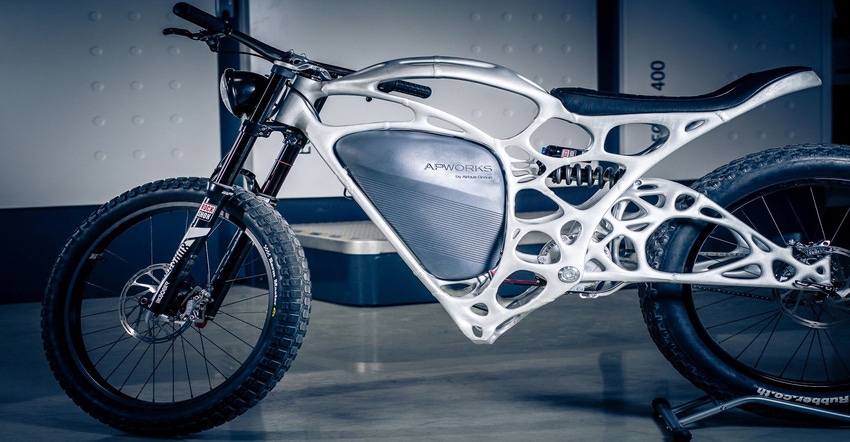Want Green Manufacturing? Here Comes a Clean 3D Printing Program
Stratasys has launched Stratasys Sustainability, the company’s commitment to a circular economy, climate action, and social impact.
September 16, 2021

Stratasys has created the program, Stratasys Sustainability, in an effort to move to green additive manufacturing. The company’s CEO, Yoav Zeif, described the program as mindful manufacturing. “Stratasys is well-positioned to provide production and manufacturing solutions that are resilient, empower local supply chains, and most importantly save lives,” Zeif said in a statement. “During the pandemic, we were able to repurpose our ecosystem to support the design, manufacture, and delivery of vital personal protective equipment and ventilator parts to the healthcare industry.”
As part of that effort, Stratasys joined the Additive Manufacturer Green Trade Association, a new global trade organization launched in November 2019. The AMGTA is a non-commercial, unaffiliated organization open to any additive manufacturer that commits to the sustainability of production or process. Part of the AMGTA’s mission is to commission research that highlights the sustainable uses of additive manufacturing.
Stratasys appointed Rosa Coblens as VP of sustainability to oversee Stratasys Sustainability. Coblens will also serve on the AMGTA board of directors. We caught up with Coblens to learn about green efforts in the 3D printing industry.
Design News: What prompted the sustainability program?
Rosa Coblens: The COVID pandemic presented an important opportunity for Stratasys and 3D printing. We were able to repurpose supply chains, overnight, to produce personal protective equipment for hospital and healthcare workers, touching and saving lives.
We understood the impact immediately: the same machines shifted to deliver new products empowering localized production; this was done through collaborative digital files that turned into end-use parts; and we demonstrated great resiliency for operations-- with less dependency on global supply chains for quality parts in real-time.
This opportunity put our value proposition front and center, with our leading polymer additive manufacturing technologies at the heart of the value chain.
With growing concern for climate change, and the need to take action, we understood the importance that these capabilities have in the new world economy, post-COVID. We look to translate this impact into an inherent part of our offering, where people and the planet benefit from our shift to mass production and manufacturing.
DN: How will the Stratasys program be coordinated with the Green Trade Association?
Rosa Coblens: Stratasys is a founding member of the Additive Manufacturer Green Trade Association. There are a handful of AM companies on the board of directors and ~30 participating members. Our shared goals are to make an industry-wide impact on sustainability.
We believe that what you can’t measure, you can’t improve and so a big focus is to fill the data gap with lifecycle analysis and research dedicated to quantitatively supporting the understanding that additive manufacturing has clear environmental benefits, especially when compared with traditional methods.
In addition, we aim to lead an industry-wide shift towards improved circular economies for all 3D Printing players, to in turn impact the carbon footprint of entire industries, the likes of aerospace, automotive, healthcare and consumer goods production.
DN: What are some of the actions the program will take?
Rosa Coblens: The Stratasys Sustainability function is committed to a strategic approach to ESG-efforts. The pillars of this strategy are 1) business, market, and thought leadership – to drive meaningful change and visible impact 2) circular economy – to commit to the ongoing improvement of existing offering: parts, processes, and practices with a focus on recycling, repair, and reuse. 3) innovation – to design for an environment, where the customer, our business, and the planet all benefit. We will tackle this challenge in a collaborative way, with our network of leading customers, industry-by-industry.
DN: Will there be an education effort to teach customers how to use Stratasys equipment in a sustainable manner?
Rosa Coblens: This relates to our four declared UN Sustainable Development Goals.
Industry Infrastructure and Innovation
Responsible Production and Consumption
Climate Action
Quality Education
Quality education is my personal passion. It’s tightly tied to our social impact efforts. We, at Stratasys, believe that to build a strong viable business, positioned to lead the way into “mindful manufacturing, we must invest in the next generation of engineers, designers, and manufacturers. We work closely with academic institutes, NGOs, and school systems around the world to secure a workforce for tomorrow that is educated and enabled to take the sustainability mission forward, so manufacturing is meaningful and valuable and future generations thrive.
That being said, we are also committed to current improvement measures – among them designing solutions for our current installed base to recycle components and reuse elements of the production process; these efforts, of course, including educating them on how to adopt them.
Rob Spiegel has covered manufacturing for 19 years, 17 of them for Design News. Other topics he has covered include automation, supply chain technology, alternative energy, and cybersecurity. For 10 years, he was the owner and publisher of the food magazine Chile Pepper.
About the Author(s)
You May Also Like





